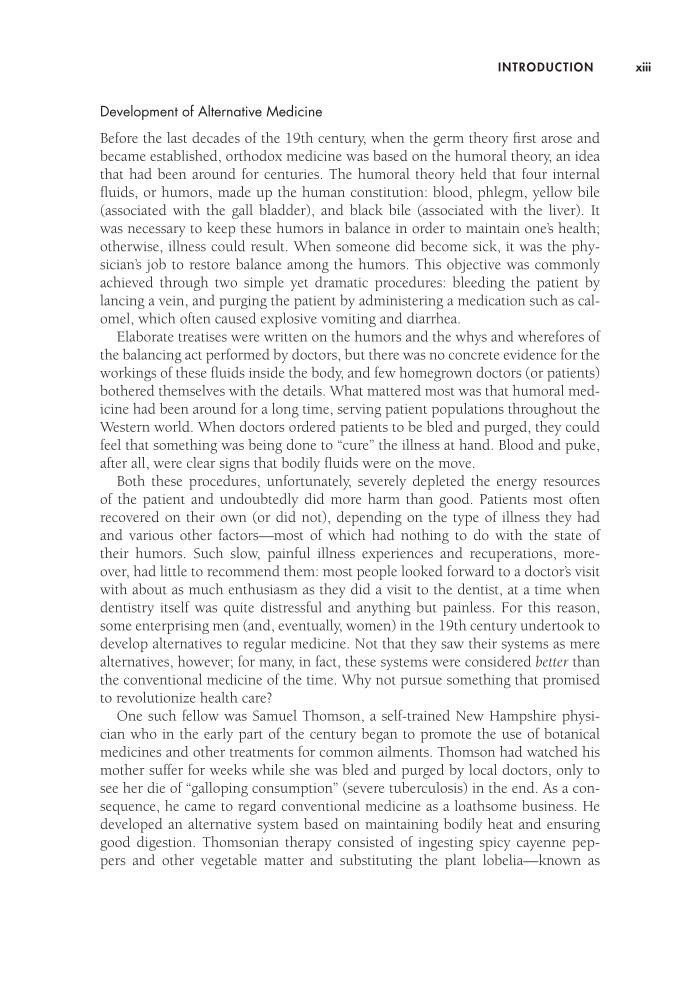Introduction xiii Development of Alternative Medicine Before the last decades of the 19th century, when the germ theory first arose and became established, orthodox medicine was based on the humoral theory, an idea that had been around for centuries. The humoral theory held that four internal fluids, or humors, made up the human constitution: blood, phlegm, yellow bile (associated with the gall bladder), and black bile (associated with the liver). It was necessary to keep these humors in balance in order to maintain one’s health otherwise, illness could result. When someone did become sick, it was the phy- sician’s job to restore balance among the humors. This objective was commonly achieved through two simple yet dramatic procedures: bleeding the patient by lancing a vein, and purging the patient by administering a medication such as cal- omel, which often caused explosive vomiting and diarrhea. Elaborate treatises were written on the humors and the whys and wherefores of the balancing act performed by doctors, but there was no concrete evidence for the workings of these fluids inside the body, and few homegrown doctors (or patients) bothered themselves with the details. What mattered most was that humoral med- icine had been around for a long time, serving patient populations throughout the Western world. When doctors ordered patients to be bled and purged, they could feel that something was being done to “cure” the illness at hand. Blood and puke, after all, were clear signs that bodily fluids were on the move. Both these procedures, unfortunately, severely depleted the energy resources of the patient and undoubtedly did more harm than good. Patients most often recovered on their own (or did not), depending on the type of illness they had and various other factors—most of which had nothing to do with the state of their humors. Such slow, painful illness experiences and recuperations, more- over, had little to recommend them: most people looked forward to a doctor’s visit with about as much enthusiasm as they did a visit to the dentist, at a time when dentistry itself was quite distressful and anything but painless. For this reason, some enterprising men (and, eventually, women) in the 19th century undertook to develop alternatives to regular medicine. Not that they saw their systems as mere alternatives, however for many, in fact, these systems were considered better than the conventional medicine of the time. Why not pursue something that promised to revolutionize health care? One such fellow was Samuel Thomson, a self-trained New Hampshire physi- cian who in the early part of the century began to promote the use of botanical medicines and other treatments for common ailments. Thomson had watched his mother suffer for weeks while she was bled and purged by local doctors, only to see her die of “galloping consumption” (severe tuberculosis) in the end. As a con- sequence, he came to regard conventional medicine as a loathsome business. He developed an alternative system based on maintaining bodily heat and ensuring good digestion. Thomsonian therapy consisted of ingesting spicy cayenne pep- pers and other vegetable matter and substituting the plant lobelia—known as
Document Details My Account Print multiple pages
Print
You have printed 0 times in the last 24 hours.
Your print count will reset on at .
You may print 0 more time(s) before then.
You may print a maximum of 0 pages at a time.















































































































































































































































































































































































































































